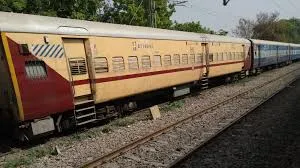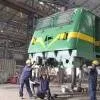A prominent player in the Indian cement industry, the leadership style and business acumen of Vinita Singhania, Chairperson and Managing Director, JK Lakshmi Cement, have made her a respected figure in the corporate world, contributing to the company's robust performance and industry standing, while earning a reputation for innovation and sustainability. She speaks about a first-of-its-kind project in India and across Asia to produce Portland calcined clay limestone cement (LC3) with an estimated 35 per cent CO2 savings, her vision in driving the company in a highly competitive market, among others, with Group Managing Editor FALGUNI PADODE.
Your tenure has been marked by rapid expansion of the JK Lakshmi Cement business. Production capacity jumped from 0.5 million tonne (MT) per annum in 1982 to over 16 MT. How has the company diversified its product range and increased production capacity in the Indian market under your leadership?
Since assuming the role of vice chairperson and managing director, I have spearheaded the strategic growth and diversification of
JK Lakshmi Cement to address the evolving landscape of the Indian construction industry. When I joined in 1982, our production capacity was just 0.5 MT per annum. Through a combination of organic growth, acquisitions and JVs,
we have expanded dramatically, reaching an impressive production capacity of around 16.40 MT today, establishing our position as a leading cement producer in India.
Beyond merely increasing capacity, we have diversified our product portfolio to offer a wider range of high-quality cement. We now produce not only ordinary Portland cement (OPC) but also specialty products like rapid-hardening cement for accelerated construction cycles and
sulphate-resisting cement for structures in harsh environments. This diversification allows us to cater to a broader spectrum of projects, ranging from residential buildings to critical infrastructure.
Our success is driven by a relentless focus on operational excellence, technological advancements and sustainable practices. We have invested in state-of-the-art production facilities that incorporate green manufacturing processes to minimise our environmental impact. Additionally, we have fostered strong relationships with customers, suppliers and communities. Looking ahead, I am excited about the company's future growth prospects. India's construction sector is primed for continued expansion, fuelled by urbanisation, infrastructure development and affordable housing initiatives.
We are strategically positioned to capitalise on these trends and further strengthen our leadership
in the market. My commitment is
to build upon our legacy of excellence and innovation, ensuring long-term value for our shareholders and customers.
In a first-of-its-kind project in India, JK Lakshmi Cement is the first cement company in India and across Asia to produce LC3. Has the company decided on the capacity to be produced and sold profitably so that the capex and opex are viable in the long run?
In a pioneering initiative for India, JK Lakshmi Cement has become the first company in India and across Asia to produce LC3, which, according to pilot trials, achieves an estimated 35 per cent CO2 savings compared to traditional methods. This project aligns perfectly with our commitment to sustainability and CO2 reduction.
Regarding the specific capacities for the profitable production and sale of LC3, we are still in the process of finalising our plans. We are conducting a detailed evaluation to determine the optimal production volume that ensures the long-term viability of this initiative, accounting for market demand, pricing strategies, the balance of capital and operational expenditures. Our goal is to ensure that this innovative product is both environmentally sustainable and economically viable, reinforcing the company's position as a leader in eco-friendly cement production both in India
and globally.
With a basic understanding of management philosophy, what challenges did you overcome while taking over leadership in the 1980s in a male dominated industry, culminating in the ‘Best Family Business Led by a Woman’ award?
In the 1980s, taking the helm
of the company in a male-dominated industry presented significant challenges. My management philosophy, rooted in empowerment and collaboration, proved crucial in navigating these hurdles.
One key obstacle was the prevailing gender bias. I addressed this by consistently demonstrating competence and decisiveness. My leadership style emphasised leading by example and fostering a meritocratic environment, where contributions were valued regardless of gender. Leading a family business added another layer of complexity. It required striking a balance between familial respect and professional accountability. Open communication and clearly
defined roles were instrumental
in maintaining harmony.
Through strategic decision-making, building a team that valued inclusivity and a commitment to continuous learning, we achieved significant growth for JK Lakshmi Cement. The ‘Best Family Business Led by a Woman’ award is a humbling recognition of this collective effort and the values we uphold at the company.
India's construction industry employs over 40 million workers, with nearly half of them being women. Despite the significant presence, their representation in leadership positions is low.
What would you suggest should be done to increase their presence in senior management?
With over 40 years of experience leading in the cement industry, I am deeply passionate about increasing women's representation in construction leadership. Imagine the potential if we leveraged the talent of our entire workforce!
To achieve this, a multipronged approach is necessary. First, companies should invest in targeted training programmes and mentorship initiatives that empower women for senior roles. Second, fostering an inclusive environment is crucial. We must challenge societal biases and implement flexible work arrangements, such as remote work and generous parental leave. These steps will help retain talent and open doors for women to excel.
Finally, amplifying the success stories of women leaders in construction will inspire the next generation to shatter the glass ceiling. Through united efforts from companies, industry associations and policymakers, we can create a more equitable construction sector with women leading the way.
How does the company plan to double the usage of renewable energy in its plants by 2030?
At JK Lakshmi Cement, sustainability is a core principle.
We are committed to significantly reducing our environmental impact, with doubling our reliance on renewable energy by 2030 as a key pillar of our strategy.
To achieve this, we have outlined a multipronged approach. First, we are making strategic investments in onsite solar and wind power generation facilities, with our pioneering floating solar panels in Rajasthan already demonstrating success. Second, we are integrating energy-efficient technologies throughout our operations to increase efficiency. Finally, we are forging partnerships with leading renewable energy providers and exploring collaborations with government initiatives to ensure long-term, reliable access to
clean energy.
By combining these initiatives with continuous process optimisation, we are confident in our ability to meet our ambitious target. This strategic focus on renewable energy not only aims to reduce our carbon footprint but contributes to a more sustainable future for all.
How does the company, which is predominantly a northern and central Indian player, perceive a move outside its comfort zone as it forays into the eastern and northeastern regions?
JK Lakshmi Cement has established a strong presence in northern and central India, and our expansion into the eastern and northeastern regions represents a strategic move to tap into growing markets. We recognise this expansion as a significant step and are approaching it with a well-informed and data-driven strategy.
Our commitment to understanding local needs is paramount. We are actively conducting in-depth market research to understand regional dynamics, consumer preferences and logistical challenges. We plan to leverage our strengths – superior product quality, exceptional customer service, and operational efficiency – to adapt to local requirements and establish strong relationships with regional stakeholders. Moreover, sustainability and social responsibility are core values at JK Lakshmi Cement. We are dedicated to positively impacting the communities we enter through well-defined CSR initiatives and environmentally conscious practices.
Although this expansion takes us beyond our traditional geographic footprint, we are confident that our proven experience, industry expertise and commitment to excellence will enable us not only to overcome challenges but to thrive in these
new markets.
The company intends to invest about Rs.80 billion over a six-year period from 2024 to 2030 to ramp up capacity from the projected 18 million tonne per annum (MTPA) capacity by the
end of FY24, to 30 MTPA. Will
this be done through expansions or acquisitions?
This growth will be achieved through a combination of expansions and acquisitions. Organically, we will focus on brownfield expansions at existing plants. This will include upgrades and debottlenecking to increase output, as well as establishing new production lines and grinding units at both existing and greenfield sites. Inorganically, we will pursue targeted acquisitions of cement companies or assets that align with our strategic objectives. Our emphasis will be on acquiring strategically located plants with potential for expansion, which will allow for efficient integration and realisation of economies of scale.
Through this dual approach,
the company aims to significantly increase production capacity, expand its geographic footprint and reinforce its position as a leading cement manufacturer in India. We are confident that this substantial investment will capitalise on the robust demand forecast and deliver long-term value to our stakeholders.
What is on your
to-be-achieved list?
My list is focused on propelling our company to new heights of success and innovation. At the top of it is driving sustainable growth and profitability while expanding our footprint across India. We aim to increase our cement production capacity to 20 MTPA in the next three to five years through a mix of organic and inorganic growth strategies. Another key priority is to strengthen our brand positioning and customer loyalty. We plan to invest significantly in marketing and advertising to highlight the superior quality and performance of our cement products. Enhancing our customer service and support is also crucial to providing an unparalleled experience to our dealers, retailers and end-consumers.
Technological advancement and digitisation are also high on my agenda. We are implementing advanced manufacturing processes, automation and Industry 4.0 technologies across our plants to enhance efficiency, productivity and sustainability. Additionally, we are leveraging digital tools and platforms to improve our sales, distribution and customer engagement strategies. Last, I am deeply committed to our environmental, social and governance (ESG) goals. We will accelerate our efforts to reduce our carbon footprint, increase the use of alternative fuels and raw materials, and improve our water and waste management practices. We also aim to significantly scale up our corporate social responsibility (CSR) initiatives to drive positive change in the communities surrounding our plant locations.
Your story is one of motivation. What would you like to convey
to budding entrepreneurs, especially women?
My journey as a woman entrepreneur stands as a testament to the power of perseverance. For aspiring entrepreneurs, especially women, I would emphasise three key points. First, cultivate unwavering self-belief. Do not be discouraged by stereotypes or perceived limitations. With dedication and a willingness to learn, you can thrive in any field. Second, embrace calculated risks and challenges. Innovation often stems from stepping outside your comfort zone. View setbacks as opportunities for growth. Remember, the most fulfilling experiences often lie just beyond our perceived boundaries. Finally, build a strong support network. Surround yourself with mentors, friends and family who believe in you and offer guidance. Collaboration is crucial and you should never hesitate to seek help when needed.
Remember, success is a journey not a destination. Prioritise integrity, continuous learning and making a positive impact. Believe in yourself, work hard and pursue your dreams relentlessly. The world needs your unique contributions. I have immense faith in all aspiring
women entrepreneurs and eagerly await the incredible ventures you will bring to life.




















